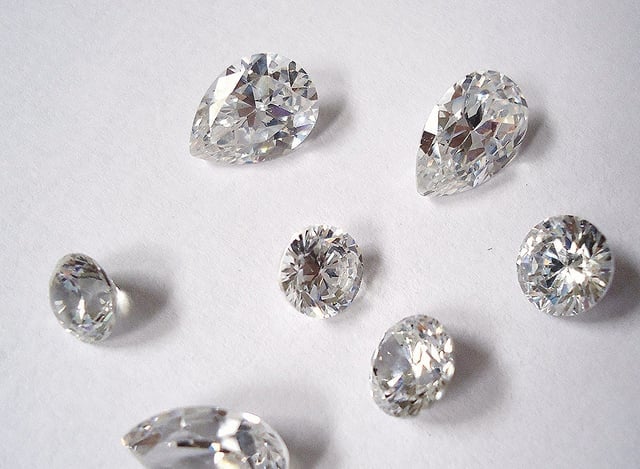Does Refractive Index Affect Gemstone Brightness?
Many factors contribute to gemstone brightness. Learn the role a gem's refractive index plays and the difference between gemology theory and practice.
2 Minute Read
Answer: Gemstone brightness is determined by many factors, including the gem's refractive index. You raise a number of points to address.
How Tilt Affects Brightness
Imagine a simple cut with a flat crown and a single set of pavilion facets at an angle which causes total internal reflection for all normally entering light. This gemstone will return all the light that enters on axis back in the direction in which it came. That is, it will have a 100% reflectivity. A diamond cut this way will return the same amount of light as a piece of glass: virtually all of it.
The variation in brilliance arises because the light doesn't all enter the stone on-axis. If you hold a stone above an easily-visible background, the background won't be visible through the stone while you're viewing on axis. If you tilt the stone, however, the background will become visible through some of the pavilion facets as the incidence angles change and total internal reflection fails. This is called windowing.
How Refractive Index Affects Gemstone Brightness
The fact is, if the refractive index (RI) of a gem is high, you have to tilt it a long way before windowing occurs. If you have a low RI material like quartz, a window will appear after only a few degrees of tilt. Thus, the higher RI material will reflect (and return) light from a much wider range of angles than the lower RI material. The higher RI gem will also tolerate a larger range of angles in the pavilion design without windowing. You can expect it to show a lively appearance over a wide range of orientations. The lower RI gem will become dull when tilted. Some gem cutting designs may highlight tilt brightness, but the quality of the results improves if you use high RI gems.
Surface Reflectivity and Gemstone Brightness
Another factor affecting gemstone brightness is surface reflectivity, which is governed by Fresnel equations and is dependent on the RI of the material. When light hits the outer surface of the material, the amount reflected back at this "first surface" depends on its RI. For quartz, it's about 5%. For diamond, it's about 20-30%. This also adds to the high apparent "sparkle" of the high RI stone.
Polish Quality and Facet Flatness
I do agree with you that polish quality and facet flatness can be even more important to gemstone brightness in practice, since all this theory assumes perfectly flat surfaces. An interesting experiment is to take one of your better gemstones and one commercial or well-worn gem into a partly sunlit room on a sunny day. Place both stones in direct sunlight so that they reflect spots of light on to a surface (preferably in shade) a few feet away. The poorly polished stone will reflect dim smudges of light because the round facets have dispersed the light over a small angle. In contrast, the spots from the properly polished stone will be small and bright. This is a useful way of assessing your facet flatness.
Dr. Clive Washington
International Gem Society
Related Articles
Creating Ring Mountings for Deep-Cut Gemstones
How Should A Gemstone Contact A Faceting Machine Lap?
Faceting Tips for Exotic Gemstones
How To Restore The Spring Of A Sterling Silver Money Clip
Latest Articles
800 Years of Mogok: A Celebration in Tenuous Times
What is the Average Gemstone Faceting Yield?
Pyroxmangite Value, Price, and Jewelry Information
How to Identify Emerald Simulants and Synthetics
Never Stop Learning
When you join the IGS community, you get trusted diamond & gemstone information when you need it.
Get Gemology Insights
Get started with the International Gem Society’s free guide to gemstone identification. Join our weekly newsletter & get a free copy of the Gem ID Checklist!
